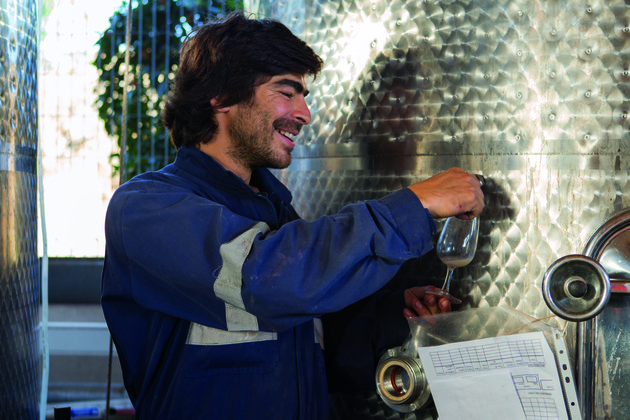
Chilean wine styles are shifting away from oak
Chile is still relatively young to the global wine scene, but the country as a whole is in the middle of a style evolution, where winemakers are now looking to produce wines that reflect what is so unique about the country.
Sebastian de Martino of the De Martino winery admits the changes needed to happen, but it took a real moment of self-reflection to realise styles needed to change. "It was in 2007 that we discussed it. We were not really enjoying or drinking the wines we were producing. My family has been here since 1934 and I had seen the wines of my grandfather; I enjoyed them more than my parents styles of wine. It has been a journey for us, but it was necessary for us to be who we are," he says.
 Sebastian de Martino of the De Martino winery
Sebastian de Martino of the De Martino winery
De Martino's wines today focus on purity and allowing the expressiveness of the terrior to come through. His approach is one that he and his winemaker Marcelo Retamal apply to the winemaking process, which involves minimal intervention.
This is definitely a shift from the past where Chilean wines had much more oak and were significantly more extracted wines. But slowly wine styles have been changing to become more delicate, with less oak and, in some cases, with the fruit being picked earlier.
Viña Maipo's Max Weinlaub says: "It is a newer trend, but I am reducing the oak impact or not using any oak at all. I think for many years we have been abusing oak, but now I am looking for the purest expression of the regions."
Where wine is being planted within the country is also changing, with more wines starting to crop up further and further south and close to the coast. Although it is more risky due to cooler climates and tough growing conditions, the cooler climates allow for longer maturation periods for the phenolic components to develop.
Felipe Marin, who is one of the winemakers at his family's Viña Casa Marin winery, is producing wines in the small village of Lo Abarca - part of the San Antonio Valley, just 4km from the Pacific coast. Being so close to the ocean and producing lighter-style wines because of the microclimate has been a challenge.

|
 Felipe Marin, Casa Marin
Felipe Marin, Casa Marin
"In 2011 we were the only vineyard, but we wanted to produce something different. The wines were very different then to what Chile was offering. We were the first white wine to sell for over £10 from Chile and none then believed in this 'new Chile.' We have a lot of frost here, even with the sea breeze. It is really hard, but we see the potential," says Marin.
De Martino has now moved further south and has a vineyard inItata Valley, where grapes were first planted as far back as 1551. Now he is even producing wines in amphorae once used called "tinajas".
 Tinajas used at De Martino
Tinajas used at De Martino
For De Martino it is about finding a wine that can truly express Chile in a way not many have experienced before.
He says: "It is going back to the roots of how wine has been made before. It is about the purity that can show the essence of a time and place. And it is out of respect. There is a reason things were done this way before."

|




